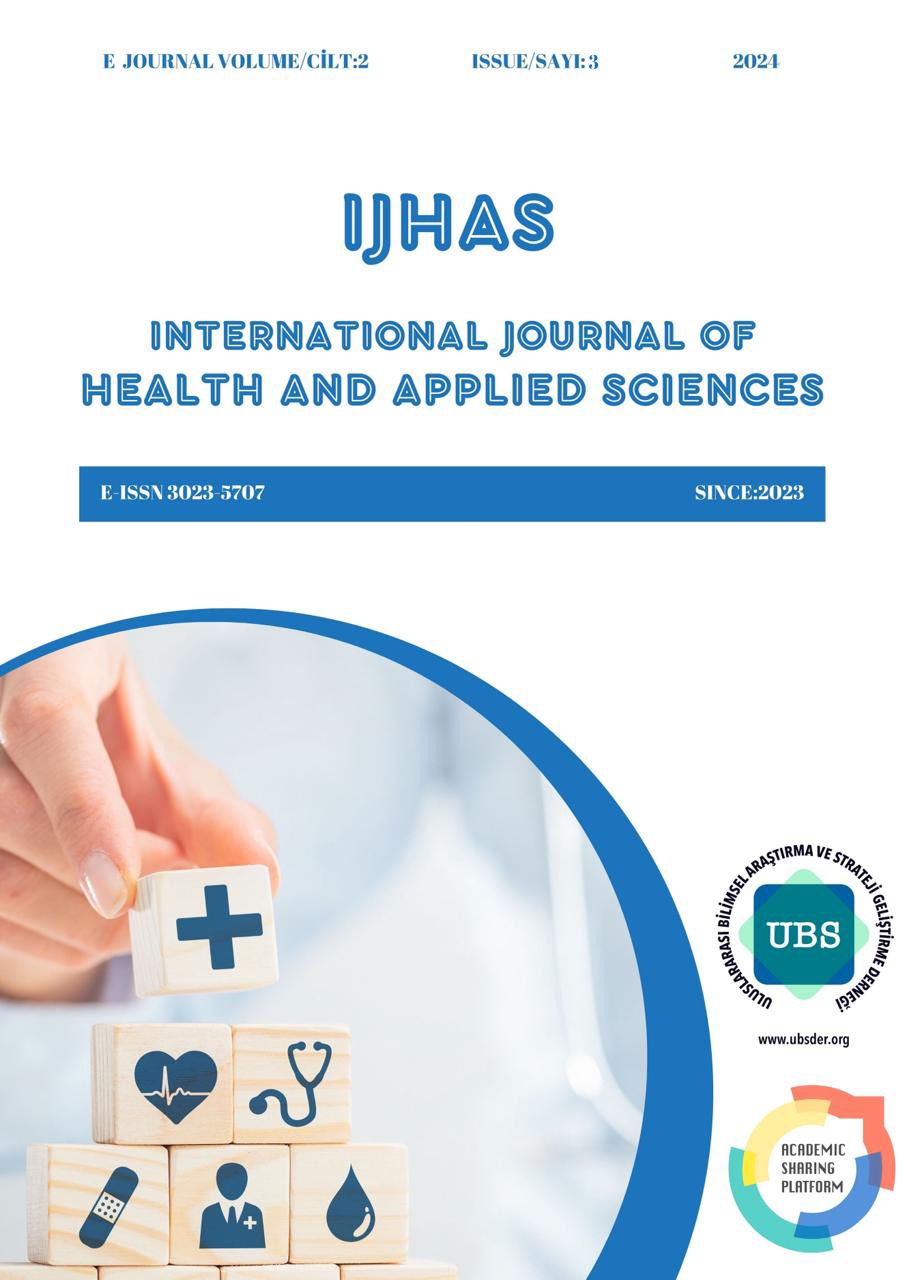KURUMSAL İLETİŞİM ARACI OLARAK ORGANİZASYON ŞEMALARI: KONYA İLİ KAMU HASTANELERİ ÖRNEĞİ
DOI:
https://doi.org/10.5281/zenodo.13145098Keywords:
Corporate Communication in Healthcare, Corporate Communication Tools, Public Hospitals, Organizational Charts, KonyaAbstract
Corporate communication encompasses the internal and external communication processes of organizations, contributing significantly to the management and sustainability of processes such as image, reputation, and brand value. Providing clues about how operations are managed within an organization, corporate communication has profound implications across various sectors and units of a company. Organizational charts can be considered one such reflection. Organizational charts provide crucial insights into how systems are managed, operations are conducted, and corporate authority and responsibilities are shared within a company. Evolving through processes like vertical, bureaucratic, decentralized, and networked organization, organizational charts are particularly crucial in understanding their creation in today's healthcare institutions, where bureaucratic efficiency in practical matters related to sustaining life is imperative.
This study focuses on public hospitals under the Ministry of Health in Konya province, forming the universe of the research, with all hospitals in the area included. Content analysis of the organizational charts of these hospitals was conducted using a research form prepared according to the Health Ministry's Quality Standards in Health (SKS) KKU04.03. The findings reveal that while the organizational charts developed under SKS are intended to strengthen corporate identity and optimize corporate communication, none of the organizational charts in Konya fully meet the minimum criteria outlined in SKS standards.
References
Aktan, C. C. ve Vural, T. (2005). Kurum kavramı, temel özellikleri ve türleri. http://www.canaktan.org/felsefe-sosyo/kurum-sosyoloji/kurum-kavram.htm, 11.12.2011.
Argenti, P. A. (2003). Corporate Communication, New York: McGraw Hill.
Buta, S., & Burciu, A. (2014). The impact of the business environment on the shaping of an organization chart. The USV Annals of Economics and Public Administration, 14(1 (19)), 128-137.
Demir, Ö. (1996). Kurumcu İktisat, Ankara: Vadi Yayınları, s.174.
Demirer, H. Özdemir, F. (2016). Hatay İli 3, 4 ve 5 Yıldızlı Konaklama İşletmeleri Yiyecek İçecek BölümüOrganizasyon Yapıları Üzerine Bir İnceleme, Journal of Tourism and Gastronomy Studies 4/Special issue1 (2016) 139-152, s. 151.
Diler, Ö. D. Kurumsal iletişim, http://www.pazarlamadunyasi.com/Desktopdefault.aspx?tabid=195&ItemId=438&Rtabid=194, 10.08.2011.
Drucker, P. (2008). Management, ediţie revizuită, Harper CollinsPublisher
Grof, A. (2001). “Communication in the Creation of Corporate Value”, Corporate Communications: An International Journal, Cilt: 6, Sayı: 4, s. 195.
Güray, O.Y. (2004). İnce İnşaat Yapı Malzemeleri Üreten Firmaların Organizasyon Yapılarının İncelenmesi ile Ortak Bir Şemanın Oluşturulması ve Bu Şemanın Örnek Bir Firma Üzerindeki Uyumluluğu, İstanbul Teknik Üniversitesi Fen Bilimleri Enstitüsü Yayınlanmamış Yüksek Lisans Tezi, s. 120.
Gürüz, D. & Eğinli, A. T. (2008). İletişim Becerileri Anlamak Anlatmak Anlaşmak, Ankara: Nobel Yayın Dağıtım, s. 177.
Harrington, H.J., & Harrington, J.S. (1995). Total Improvement Management, McGraw –Hill, 1995; traducerea în limba română Management total, Editura TEORA, 2001
Hayran, O. (2012). Sağlık Yönetimi Yazıları (2nd ed.). Ankara: SAGE Yayınları.
Huang, N., & Kleiner, B. H. (2005). “New Developments Concerning Corporate Communications”, Management Research News, Cilt: 28, Sayı: 10, s. 59.
Koç. F., Koç, G.G. ve Kokangül, A. (2015). Çukurova Medical Journal, 40(3). 547-554. S. 553.
Maat, H. P., & Bierman, G. (2005). How lay readers and experts understand organization charts: A study of diagrammatic literacy. Information Design Journal & Document Design, 13(2).
Maciariello J. (2005). The Daily Drucker , Elsevier, Butterworth Heinemann, UK, 2005.
North, D. C. Kurum ve Kurumsal Değişim, http://www.canaktan.org/ekonomi/anayasal_iktisat/diger_yazilar/yalcinkaya-north-kurumsal.htm, 30.11.2011.
Ormeno, M. O. (2007). Managing corporate brands: A new approach to corporate communication. Wiesbaden: Verlag.
Özçelik, E. (2021). Türkiye kamu hastanelerinin web sitelerindeki organizasyon şemaları analizi. International Social Sciences Studies Journal, 7(90), 4987-5013.
Özdemirci, F. (1999). Arşivlerimizin kurumsal yapılanma gereksinimleri, bilginin serüveni: dünü, bugünü, yarını. Türk Kütüphaneciler Derneği’nin Kuruluşunun 50. Yılı Uluslararası Sempozyum Bildirileri, 17-21 Kasım, Yay. Hazırlayan: Özlem Bayram vd., Ankara: TKD, s. 367.
Özdemirci, F. (2007). Kurumsal İletişim ve Belge Yönetimi -Institutional Communication and Records Management. I. Uluslararası Bilgi Hizmetleri Sempozyumu: İletisim, 25–26 Mayıs 2006, İstanbul (Bildiriler). Yayına Hazırlayan: Ayşe Üstün, Ümit Konya İstanbul: Türk Kütüphaneciler Derneği İstanbul Şubesi, s. 2.
TC. Sağlık Bakanlığı, Sağlıkta Dönüşüm, 2003. https://www.saglik.gov.tr/TR,11415/saglikta-donusum-programi.html. Erişim Tarihi: 01.07.2024
TC. Sağlık Bakanlığı, Sağlıkta Kalite Standartları, 2020. ISBN: 978-975-590-766-6, Sağlık Bakanlığı Yayın No: 1156, Ankara.
Tengiz, F.I. ve Özmen, M. (2019). İzmir Kâtip Çelebi Üniversitesi Tıp Fakültesi Organizasyon Şeması Ve Optimizasyonu. Tıp Eğitimi Dünyası, 18(54), 5-9.
Tutar, H. (2003). Örgütsel iletişim. Ankara: Seçkin Yayıncılık
___ ___, https://konyaism.saglik.gov.tr/TR-56452/kamu-hastaneleri.html

Downloads
Published
How to Cite
Issue
Section
License
Copyright (c) 2024 Mikail BATU

This work is licensed under a Creative Commons Attribution 4.0 International License.





